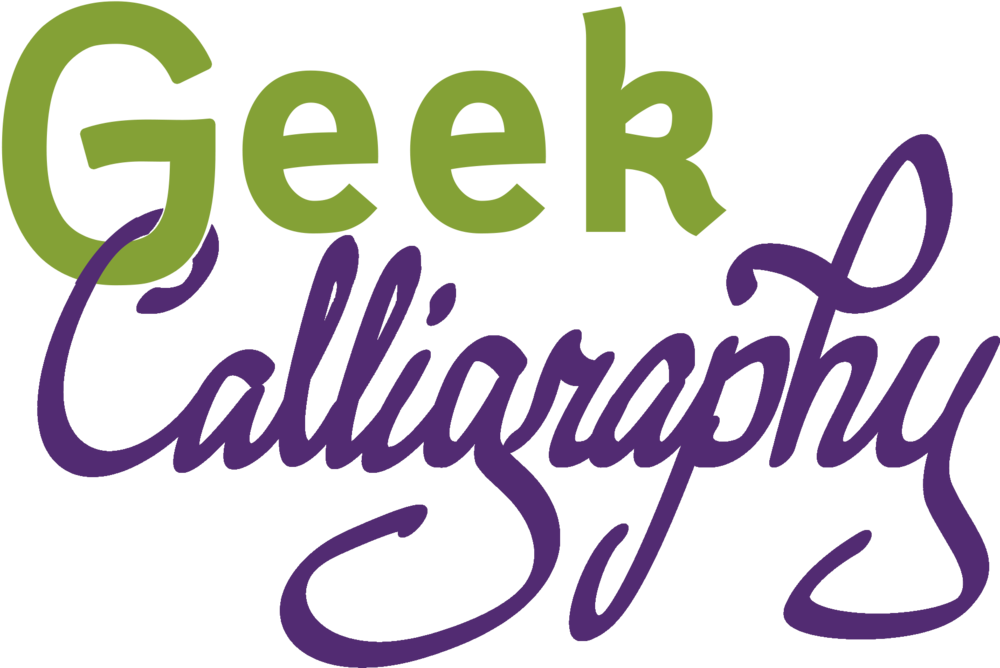Back in May I wrote about the discomfort I was experiencing as I started to write with a quill due to the shaft being narrower than was comfortable for me to grip. Terri knitted two quill grips for me to use, proving that she is a wonderful manager and best friend and sometimes just as inclined as I am to do weird stuff just because the idea is there.
Alas, I discovered I have a tendency to get ink on them. And when you get ink on yarn you are gripping firmly, it comes back out. Sometimes I just got it on my fingers, sometimes it dripped, and sometimes it gooshed out in truly unfortunate ways. No photographic evidence of this part exists, because whenever it happened I was occupied with grabbing for blotting rags rather than reaching for a camera. I refuse to attempt to recreate it for the interwebs - I have some dignity to maintain.
So I turned back to the Rainbow Loom grip that I made. It is significantly less comfy than Terri's knitted ones, but rubber bands have zero absorbance, so I just wiped it off whenever I got ink on it. It did not get quite as sweaty as I had feared it would, but the knobbiness got to be a problem if I wrote for more than an hour.
Around the same time that I was inspired to upgrade my nib organization, I was similarly inspired to look into solving the persistent irritant of my quill grip. I knew that what I really wanted was molding rubber, but that I also didn't want to deal with making a mold. Fortunately for me, other people have also had a similar desire, and some time spent googling around introduced me to Sugru.
I ordered some Sugru and after a number of delays I finally got it. Based on all the images and gifs I have seen of people putting it on wires and showing how bendy it is I assumed it would have a decent amount of squish to it after it cured. Between the formulation of that sentence and the photos of people using it to hang pots on the wall, you have probably guessed that this did not turn out to be the case. Yet somehow I failed to reason that out. So I wrapped the entire packet around it in an effort to increase the girth of the quill as much as possible to counteract the assumed squish. Turns out, Sugru is only bendy when small amounts are wrapped around other things that are bendy. When you wrap a chunk around something that doesn't have a heck of a lot of give to it, it's pretty solid.

![Rawhide being shaped into tefillin. [Image shows large sheets of ivory colored rawhide with vague and then more precise box shaped protrusions in one end. In the front are unpainted tefillin boxes]](https://images.squarespace-cdn.com/content/v1/56565a97e4b0acafe106535a/1505090836533-M4UERN021G3P7UPF10J2/tefillin_01.jpg)
![An example of healthy tefillin. [Image shows a very angular black tefilah***** for the arm. It is comprised of a cube on top of a stitched regtangular base, with black leather straps running through it.]](https://images.squarespace-cdn.com/content/v1/56565a97e4b0acafe106535a/1505090719489-BPALAQYPU8I6CB296GP2/Tfilin_shel_yad.jpg)













